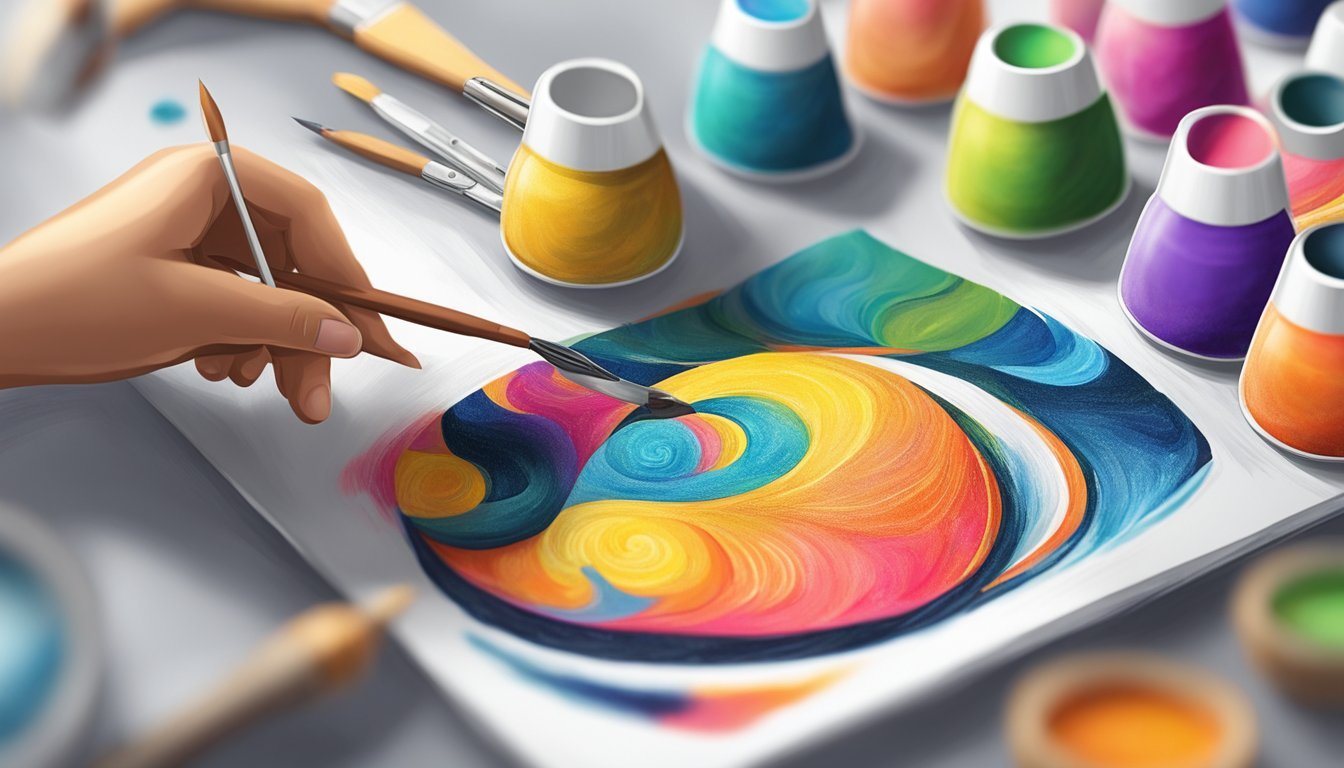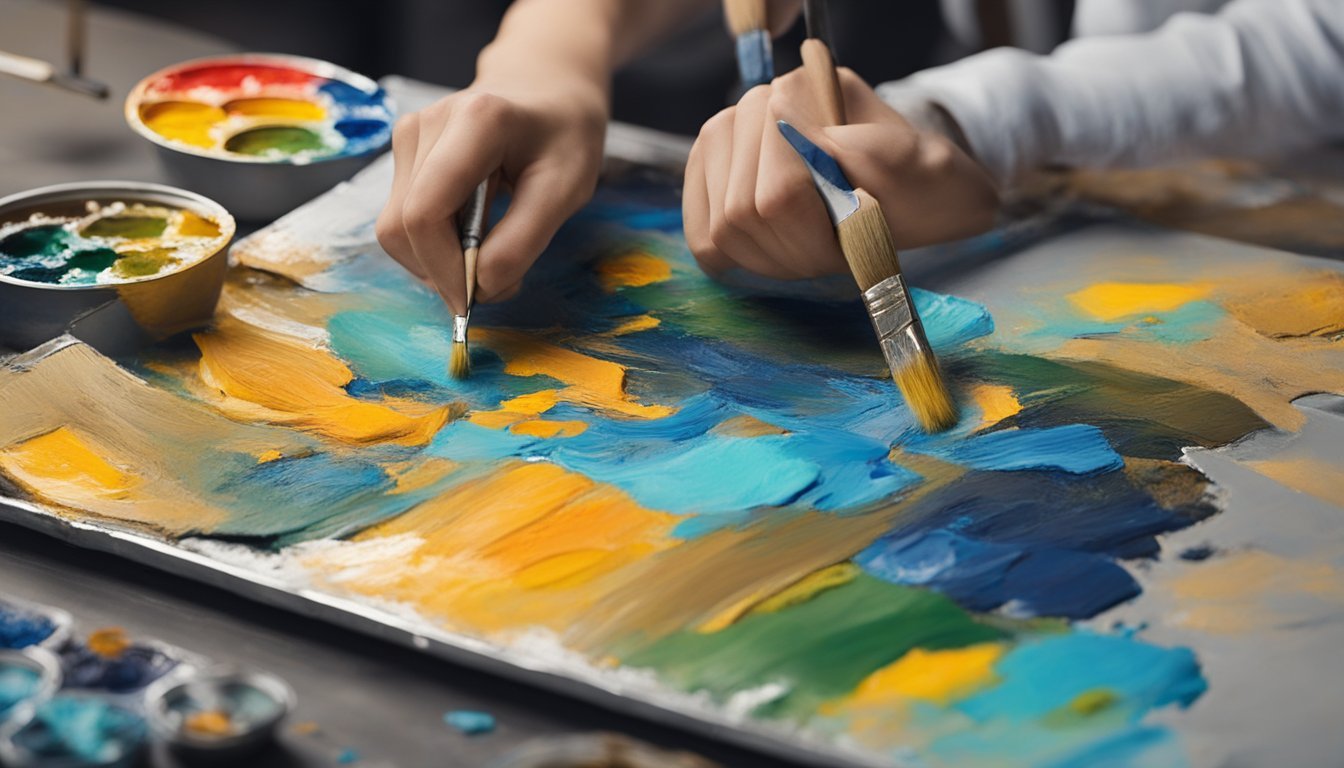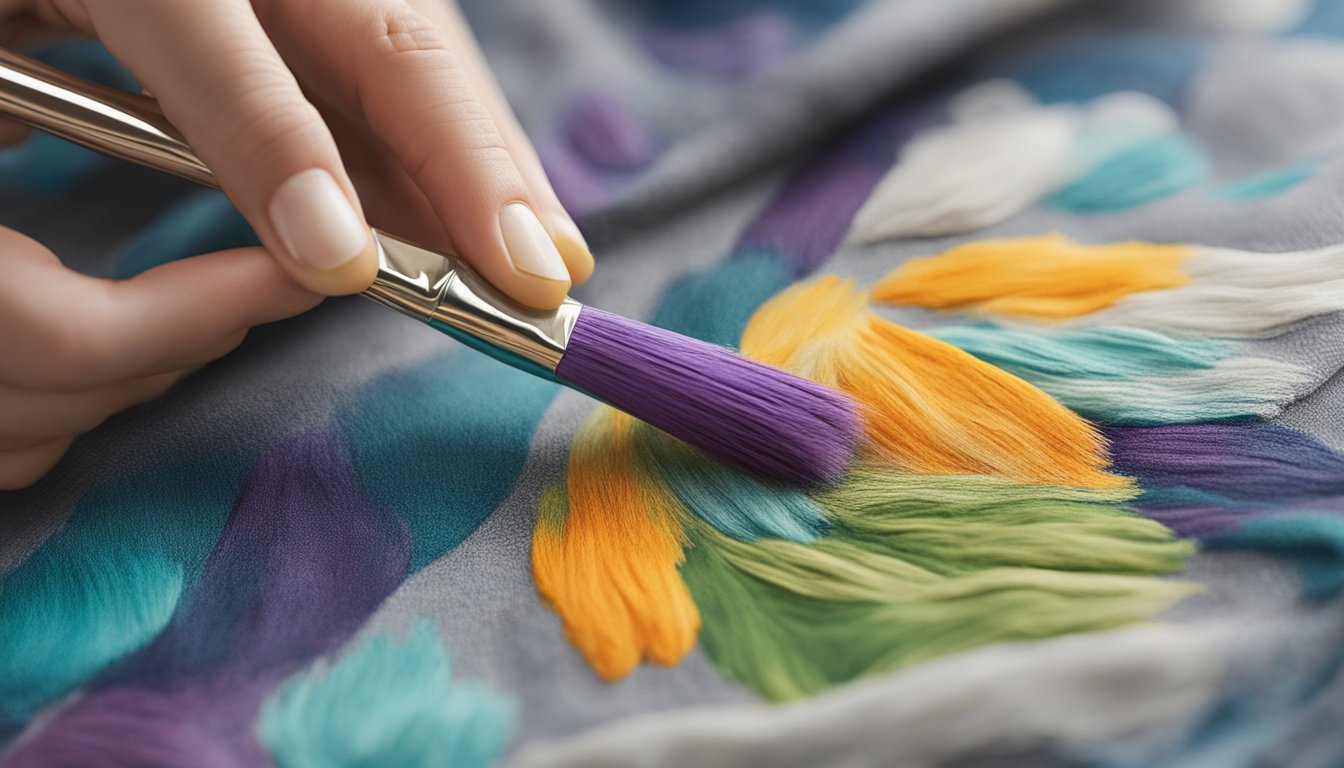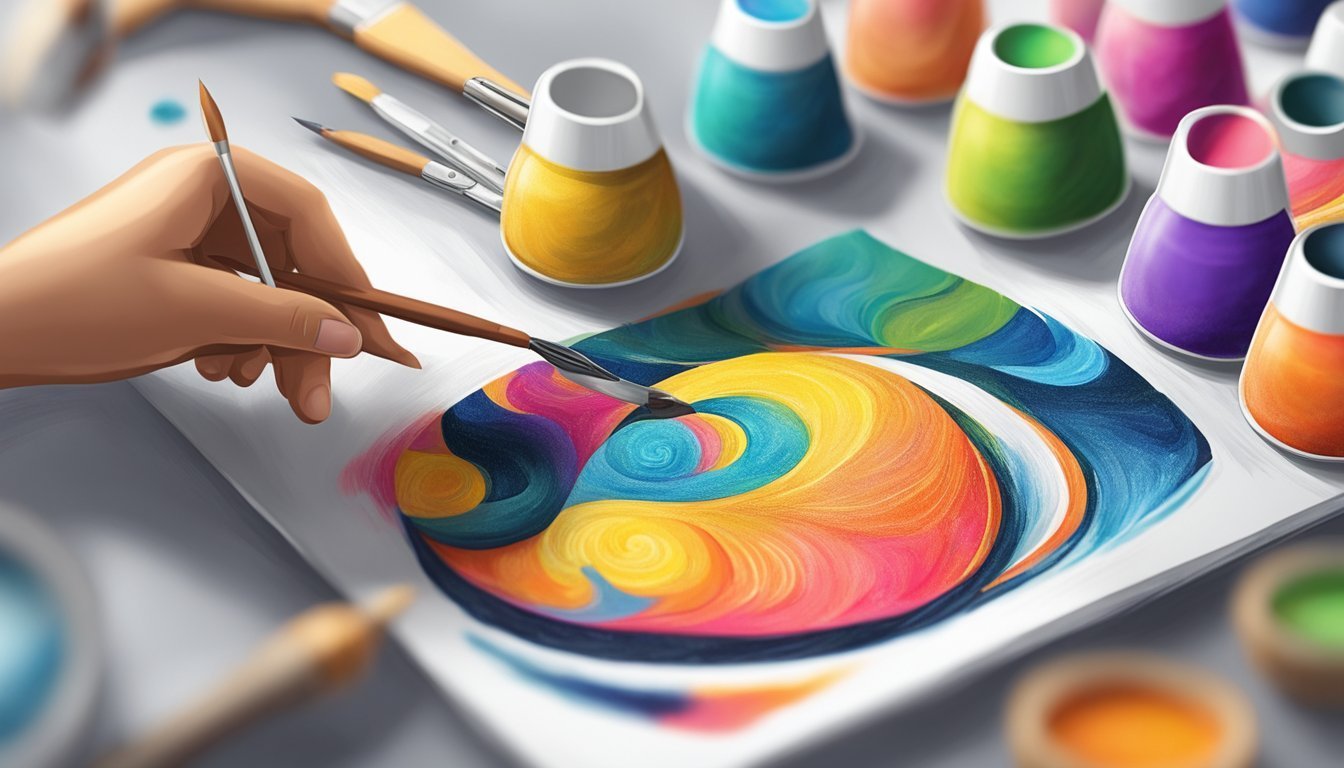When you personalize textiles, acrylic paint can open a world of creative possibilities.
From t-shirts to canvas bags, acrylics allow you to express your unique style in fun and innovative ways. Mastering various techniques will not only enhance your painting skills but also ensure your designs are vibrant and durable.

Whether you’re a beginner or an experienced artist, finding the right methods for applying acrylic paint to fabric can make a big difference in your projects.
Knowing how to prepare your materials, choose the right fabric, and apply the paint can elevate your craft.
With the right techniques, you can turn ordinary textiles into eye-catching pieces that showcase your individuality.
1) Layering for Texture

Layering is a fantastic way to add depth and interest to your textile projects.
Start with a base layer of acrylic paint.
This sets the stage for your design.
Once your first layer dries, you can add more color on top.
Using a broad brush or palette knife, apply thin layers of paint.
This method builds texture while keeping the colors vibrant.
Experiment with different techniques between layers.
Try carving into the wet paint for a unique look.
The texture created can add a whole new dimension to your fabric.
You can also work with heavier body acrylics.
These thicker paints can create bold, raised areas that stand out.
Layering these paints builds both depth and visual appeal, engaging the viewer.
Don’t be afraid to mix textures, either.
Combining various elements, like fabric or other materials, can enrich your artwork.
The more layers you add, the more engaging your piece can become.
Using Fabric Medium
When painting on textiles, using fabric medium is crucial.
This product helps acrylic paint adhere to fabric and stay vibrant even after washing.
It’s like a secret ingredient for your project.
Mix the fabric medium with your acrylic paint according to the instructions.
Typically, the ratio is one part medium to two parts paint.
This blend gives your colors flexibility and prevents them from cracking.
Don’t confuse fabric medium with other substances like water or glue.
Fabric medium is designed specifically for this purpose, ensuring your artwork lasts.
If you want to maintain color intensity, avoid adding too much medium.
Once you’ve mixed everything, apply the paint onto your fabric.
Be patient and let it dry completely before washing.
Following these steps will help your designs stand up to time and wear.
3) Brush Strokes Variation

Experimenting with brush stroke variations adds depth to your textile projects.
Different strokes can create unique textures and effects, making your work visually interesting.
You can use varied widths and pressures to achieve different results.
For instance, broad strokes can cover larger areas quickly, while fine strokes allow for detail and precision.
Try techniques like dry brushing to create a textured look.
This method involves using a dry brush to apply a small amount of paint, which produces a rough, uneven finish.
Don’t shy away from layering different colors using various strokes.
This technique can emphasize certain areas of your fabric and create dynamic contrasts.
Using tools like palette knives can also enhance your brush strokes.
They offer a different feel and can introduce even more variation to your paintings.
As you gain confidence, play around with the angles and speed of your strokes.
You’ll start to see how each brush movement influences the final look of your fabric art.
4) Dry Brushing Technique

The dry brushing technique is a fantastic way to add texture to your textile projects.
You’ll want to start with a brush that has very little paint on it.
Dip the brush lightly into your acrylic paint, then wipe most of it off on a cloth or paper towel.
Next, gently drag the brush across the fabric.
The sparse paint will cling to the raised areas, creating a beautiful textured effect.
This method works well for various designs, like leaves or weathered surfaces.
Experiment with different brush sizes.
A small brush can create fine details, while a larger one can cover more area.
Adjusting the pressure on your brush will also give you different results.
This technique is simple enough for beginners and versatile for seasoned artists.
It’s a great way to explore texture without the need for complicated methods.
Enjoy the process and watch your fabric come alive!
5) Blending Colors Across Fabric

Blending colors on fabric can create a beautiful, seamless look.
Start with your base color and apply it to the area where you want to blend.
Next, take a second color and work it in while the first is still wet.
This helps the colors merge smoothly.
Use a brush or sponge to dab or swirl the colors together.
Avoid harsh lines by maintaining a light hand.
You can also layer colors for depth.
Allow each layer to dry before adding more.
If you want a specific effect, like ombre, gradually fade the color by adding white or a lighter shade.
Experiment with different techniques to see what works best for your project.
Enjoy the process and have fun mixing!
Understanding Acrylic Paints for Textiles
Acrylic paints can be a fantastic choice for textiles, providing vibrant color and versatility.
Knowing how these paints interact with fabric and selecting the appropriate materials will help you achieve the best results.
How Acrylics Bond with Fabrics
Acrylic paints bond with fabrics through a chemical reaction that occurs as the paint dries.
The unique composition of acrylics allows them to permeate the fibers, creating a strong bond that is both flexible and durable.
To improve adhesion, consider using a fabric medium which alters the paint’s properties, making it more suitable for textiles.
This medium enhances flexibility and ensures the colors stay vibrant even after washing.
After applying the paint, heat-setting it with an iron can further strengthen the bond.
This process locks in the color and makes your artwork more resistant to wear and washing.
Choosing the Right Fabric
Selecting the right fabric is crucial for successful fabric painting.
Natural fibers like cotton, linen, and silk typically yield the best results.
They absorb acrylic paint well and allow for smooth application.
If you choose synthetic fabrics, like polyester, look for those specifically designed for use with acrylics.
These usually have a coating that aids paint adhesion.
Always pre-wash the fabric to remove any sizing or chemicals.
This ensures better paint penetration and reduces the risk of fading or peeling later on.
Testing your paint on a sample swatch can help you gauge how the final product will look.
Techniques for Achieving Vibrant Art
Creating vibrant art on textiles with acrylic paints involves precise techniques that enhance color intensity and depth.
Employ layering and blending techniques alongside the use of textile mediums for the best results.
Layering and Blending Colors
Layering and blending are crucial for achieving a rich and dynamic look.
Start by applying a base layer of color and let it dry completely.
Next, add additional layers of different colors, adjusting the opacity to create depth.
Tips for effective layering:
- Use transparent paints for top layers to maintain visibility of the base color.
- Blend edges where colors meet to create a smooth transition.
- Consider using a wet brush or sponge to facilitate blending.
You can also experiment with color mixing directly on the fabric.
This can lead to unique and unexpected results that make your artwork stand out.
Using Textile Mediums
Textile mediums are game-changers for acrylic painting on fabric.
When you mix acrylic paints with a textile medium, you enhance the paint’s adhesion and durability on fabric.
Benefits of using textile mediums:
- Improved Flexibility: Helps prevent cracking or peeling.
- Vibrant Colors: Maintains the brightness and vibrancy of your colors after drying.
- Soft Feel: Ensures your fabric remains soft and flexible, rather than stiff.
Mix the medium according to the package instructions.
The usual ratio is 1 part medium to 2 parts paint.
Apply it using a brush or sponge for even coverage.
Remember to allow adequate drying time before using or washing the fabric.


